Power displacement cruiser – Origami Duck
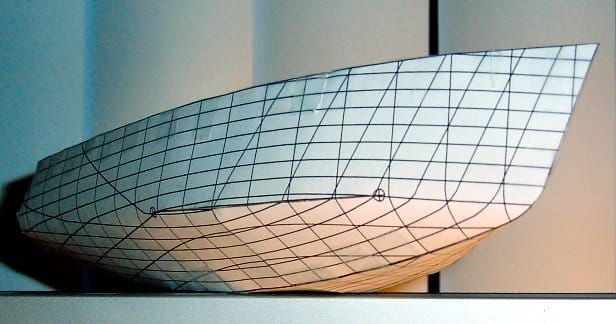
Study Patterns
For interest and education, the design process is outlined below:
Step 1 – Preliminary design
Drawings and sketches are put forward as possible designs.
Troller
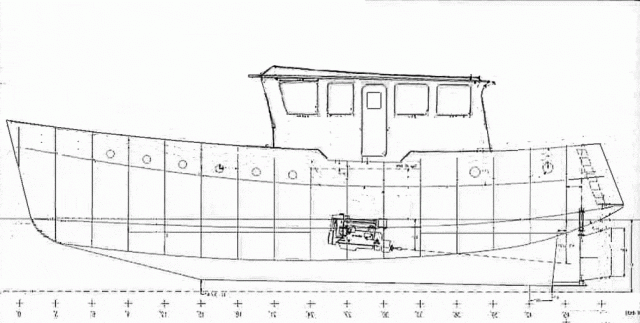
Trawler
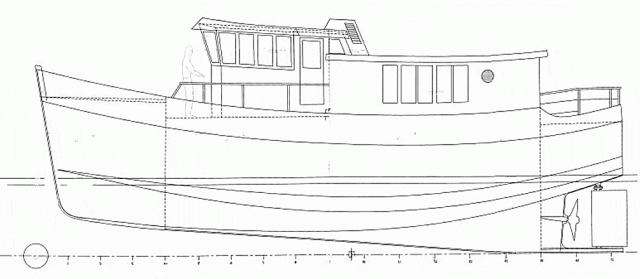
Workboat
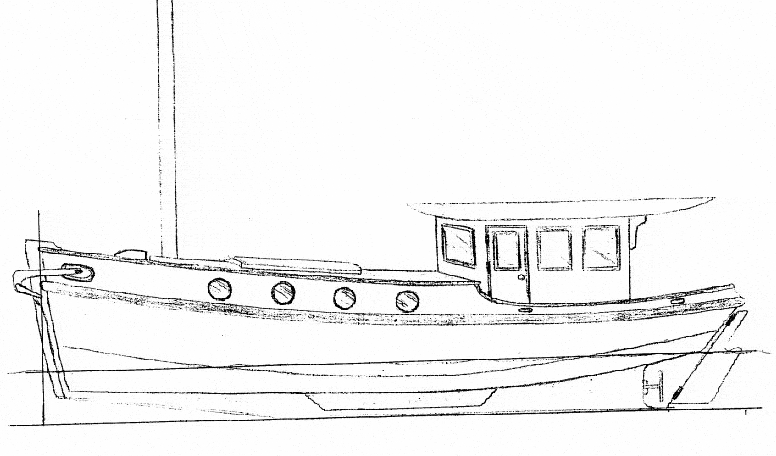
Step 2 – Selection
A design is selected, and transferred to the computer. In this case we selected the Troller.
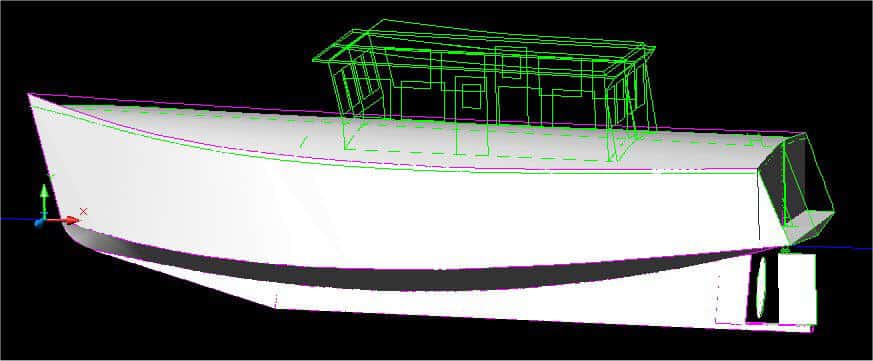
The lines are similar to the sketch, with some differences. The twist has been removed from the sheer and chines, the run aft is flatter, a balanced rudder has been added, and the rudder post has been moved outboard of the transom to simplify maintenance.
Step 3 – Origami Model
The conventional boat is now overlaid with an origami approximation.
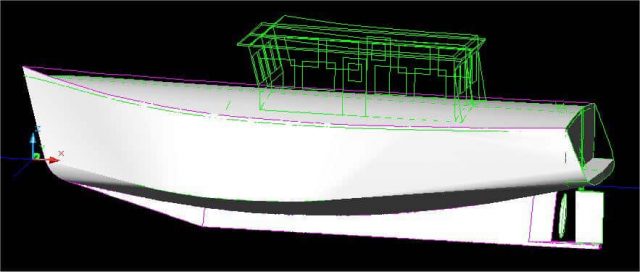
As can be seen, this model is quite similar to the original. The chine has been replaced with a short dart, and round sections replace the hard sections in the bow and stern.
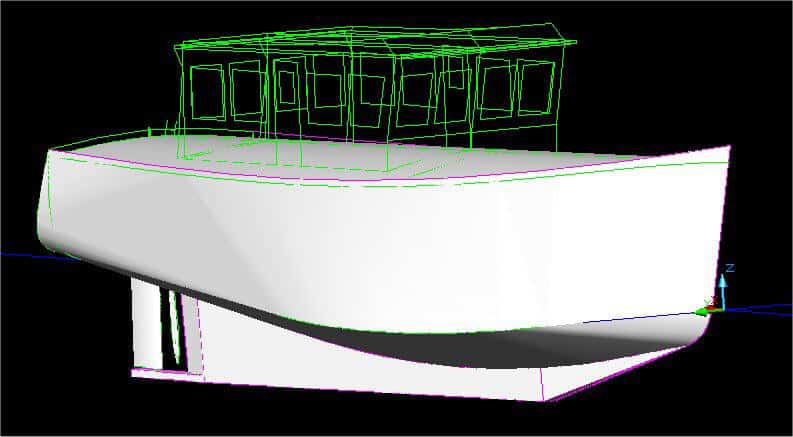
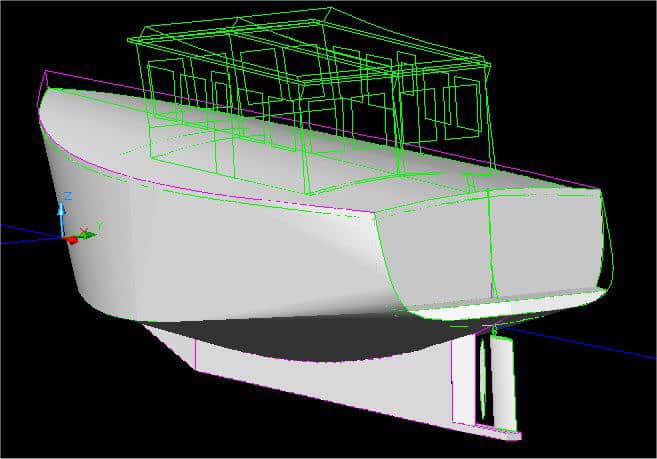
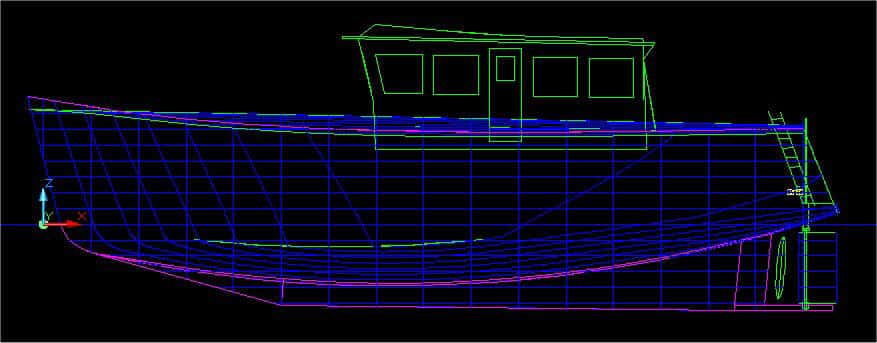
The profiles and waterlines are on 1 foot spacing, with the stations on 3 foot spacing.
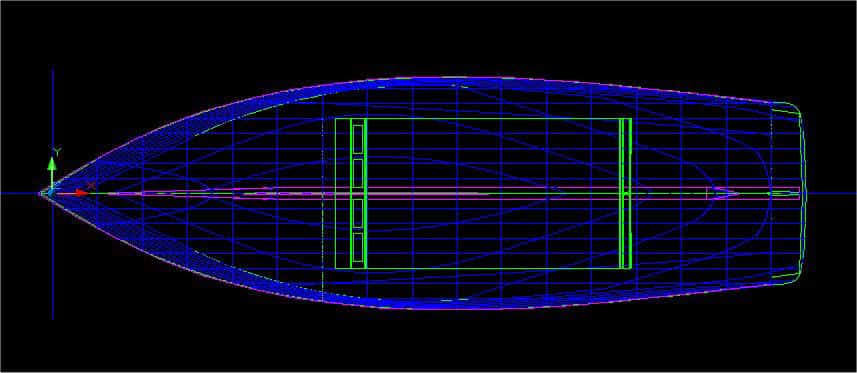
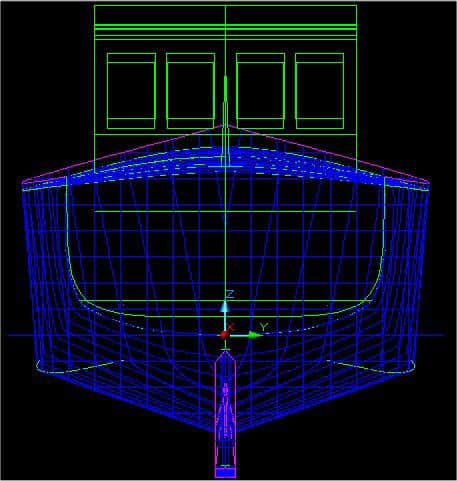
Don’t be mislead as to the deck curvature in this drawing. There is an optical illusion created by the slope of the deck. Look at the bottom of the deck to see the true curvature. This hull has 7 foot headroom in the house and under the flush deck. The floors run at the same height as the chine ends (12 ” below WL) to maximize floor space, leaving nearly 3 feet under for tanks.
Length 51′ 4″
Beam 15′ 6″
Displacement 60,500 lbs
Draft 5′ 5″
1″ immersion 2600 lbs
Step 4 – Pattern
Patterns are generated to fold the origami model. The darts have been obscured in the display patters for security reasons. The purchase patterns are of course in full resolution and include the dart details.
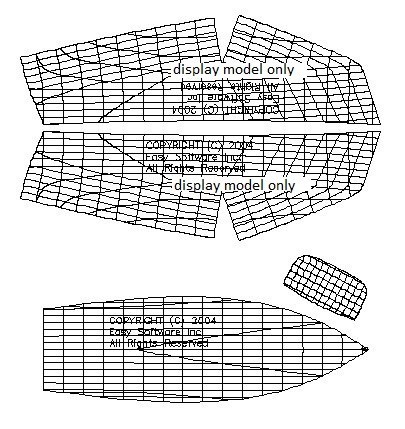
Step 5 – Test Fold
Paper models are made from the patterns.

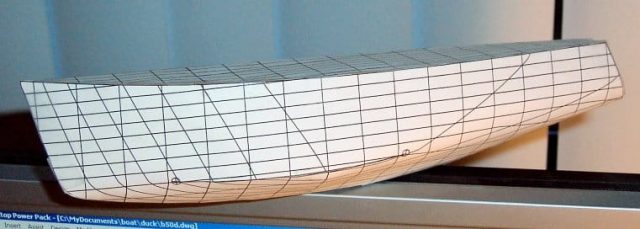
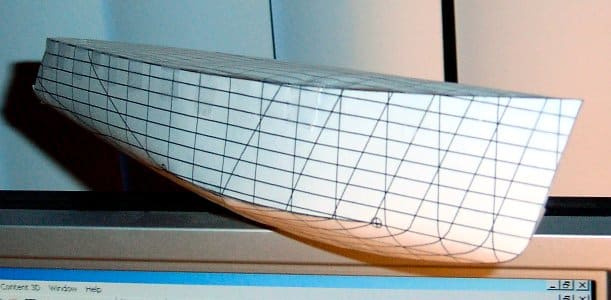
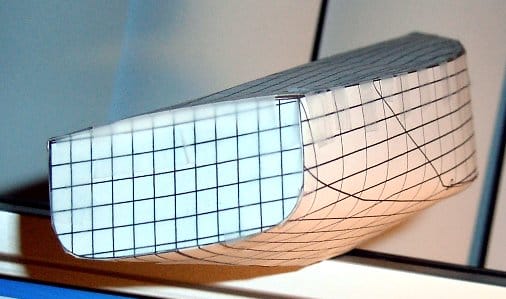

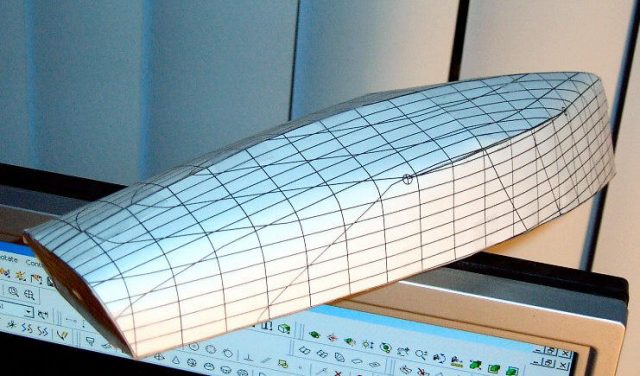
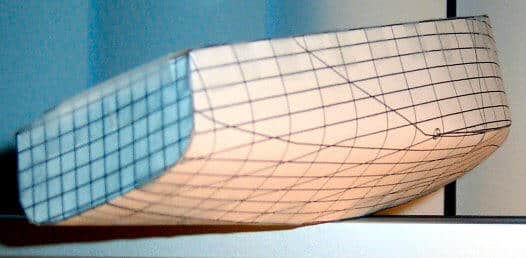
Step 6 – Evaluation
The pattern works and is fair. A second chine could be added to support stabilizers or bilge keels.
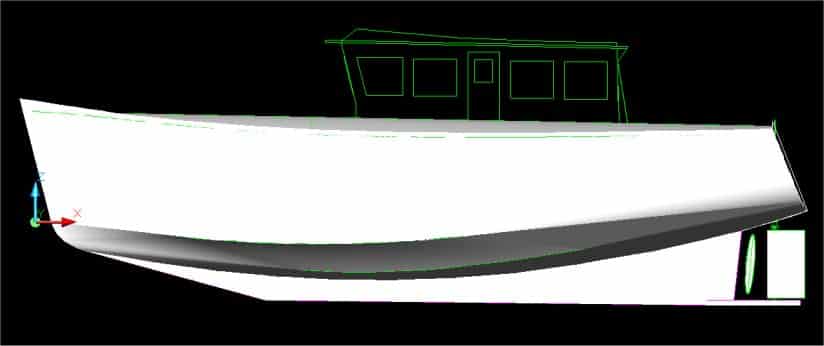
A second chine has been added to the hull
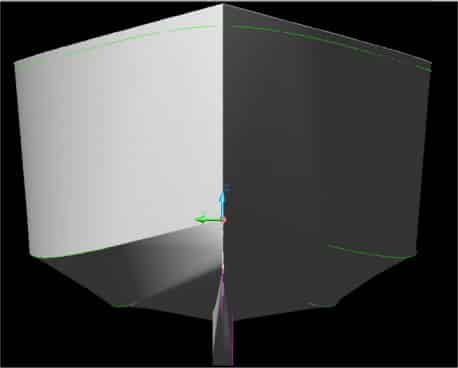
This strengthens the hull locally underwater, increasing tank space, and provides an attachment point for stabilizers and/or bilge keels if desired.
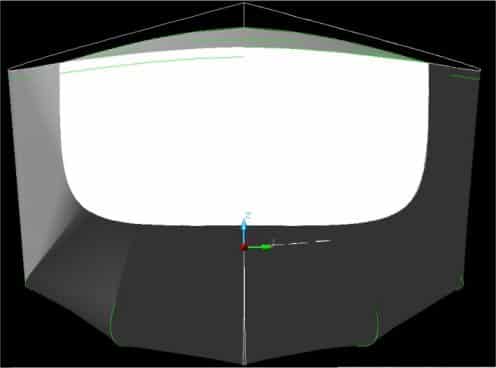
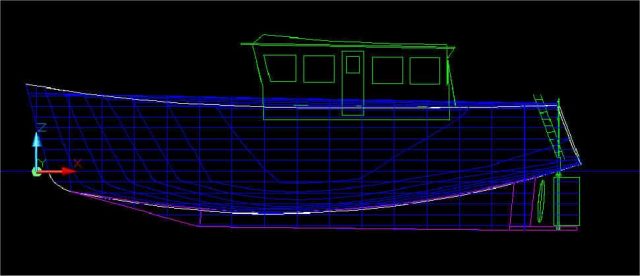
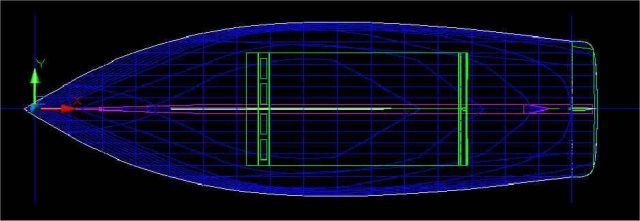
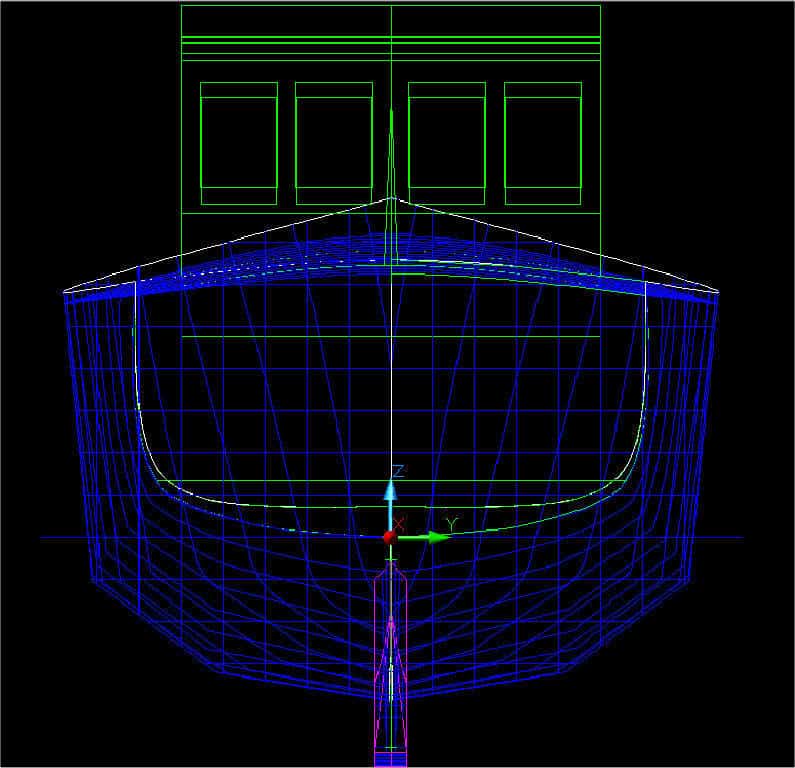
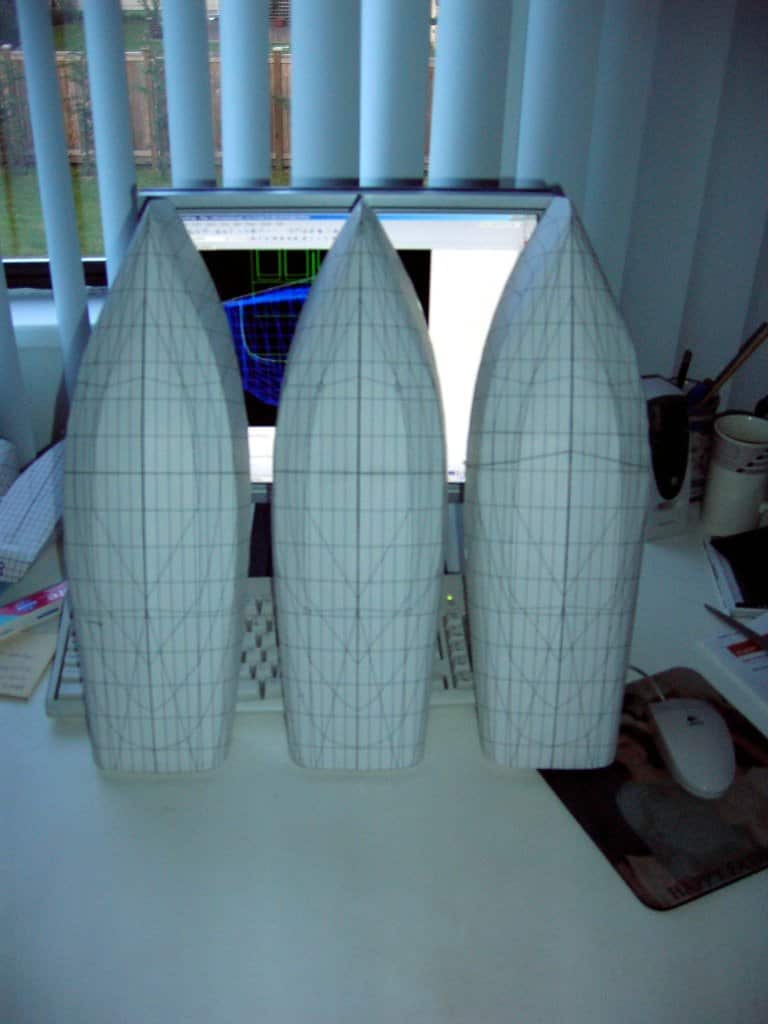
Three variations on a theme, with slightly different chine lengths and placements. All hulls are printed on regular bond paper, to ensure any “out of fair” conditions are not hidden by using heavy cardboard.